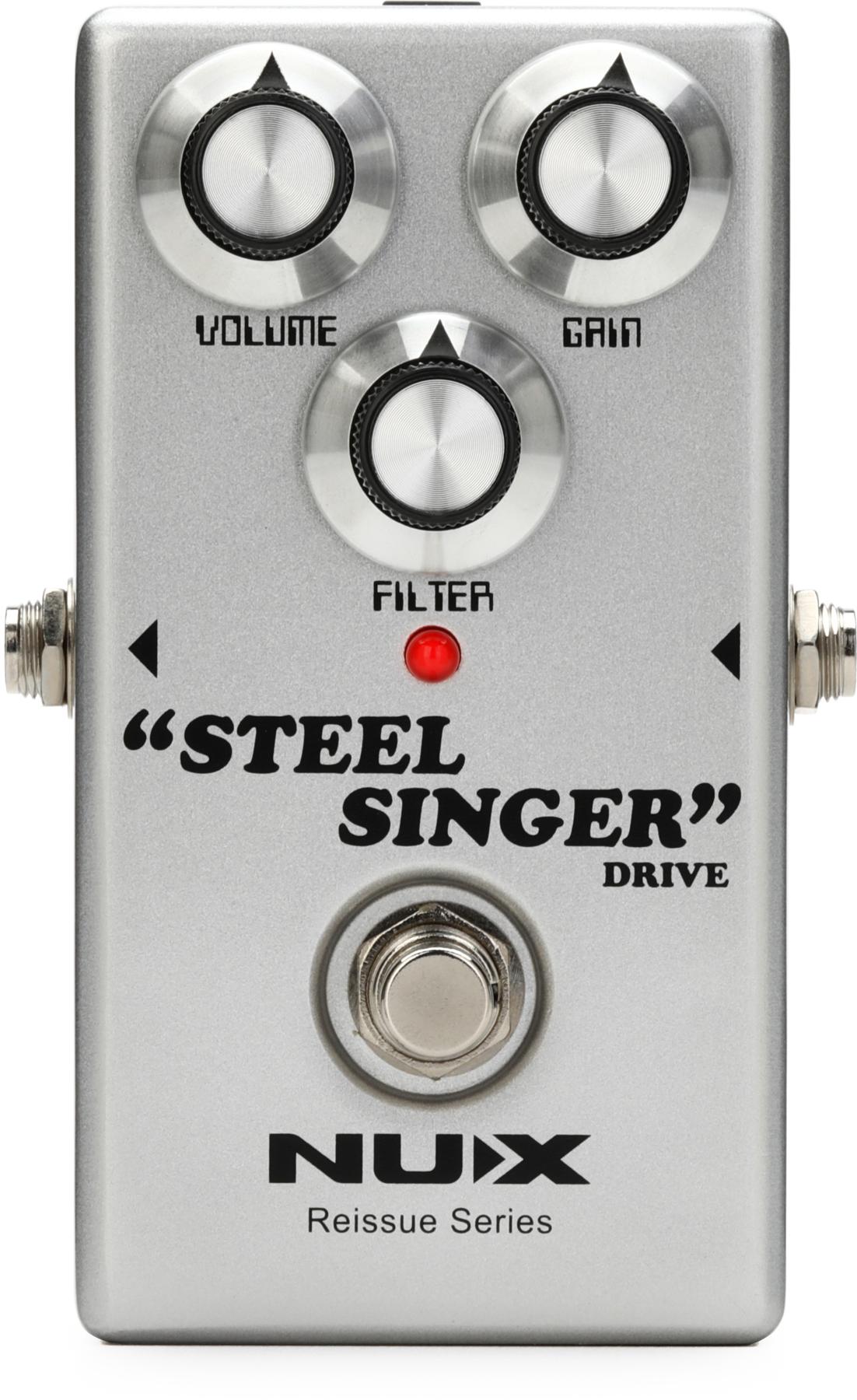If you play enough gigs with an acoustic guitar—even if it’s just a part of your set—it won’t take long to understand the merits of a DI. Even a very basic one can be a bit like having your own little sound engineer in a box. A good one gives you the means to handle the excruciating variables of playing a coffeehouse one night and a rock box the next, and optimize the sound of your instrument for either situation.
The German-built Acouswitch IQ DI from Ruppert Musical Instruments falls into the very good category. It’s built as solid as an old Mercedes, has a very effective EQ, and boasts features like the body contour control that will help you manage the most harrowing feedback and garbage-PA situations. But it can be a lot more than a tool for acoustic-crisis management. It’s built to open up performance possibilities too. This ability to expand your acoustic sound palate and help you avert disaster makes the Acouswitch IQ DI a pretty powerful tool.
Low Profile, Brawny Build
The IQ DI is one of those
pieces of gear that feels
thoughtfully designed at every
turn. First, it would be hard
to make a pedal that does
as much as this one any less
obtrusive. The whole thing
isn’t much wider or thicker
than a paperback, yet it’s home
to two channels (through
which you can run separate
instruments), eight I/Os, nine
knobs, three footswitches, and
two mini toggles. And all of
it feels built to space-program
tolerances.
The real marvel, though, is how integrated it all feels. The knobs are all recessed into a raised, almost roll-bar-like section on the pedal’s surface, which ensures you won’t break any off or accidentally change settings. (That said, given how stubbornly the knobs turn when you want them to, you’re unlikely to have any such mishaps.) The control layout also makes the pedal surprisingly easy to navigate.
Stage Presence
I tested the IQ DI with an L.R. Baggs
Element-equipped Martin 00-15 running
through a Mackie PA, and in both solo and
small-band settings, the IQ DI was invaluable
for tailoring the Martin for a given
song or setting. The Element is a pretty
transparent and accurate system that rarely
needs much help in a quieter, solo setting.
But it can sometimes add a lot of low-end
overtones to the little Martin’s sound, and
I wanted to experiment with adding a little
more high-mid content to the guitar’s mellow,
mahogany voice.
With the Acouswitch IQ, it was an entirely painless process of isolating the desired frequency with the MF (mid frequency) control and boosting it with ML (mid level) control. Unlike a lot of DIs and EQs with semi-parametric capabilities, the IQ’s mid-boost section had an actual range rather than just working in an on-or-off manner. There are no dB increments marked on the enclosure itself, but with a range of +/-18 dB, there’s lots of room to feel through the EQ process intuitively.
Ratings
Pros:
Built like it was carved from granite. Real sound-sculpting power and flexibility. Smart design.
Cons:
Stubborn knobs make fast adjustments harder. Expensive.
Tones:
Ease of Use:
Build/Design:
Value:
Street:
$599
Company
rmi.lu
If your preferred EQ settings tend to induce feedback, particularly in the low end, the body contour control—which is effectively a notch filter that works within the 45 to 500 Hz range—is pretty effective at reigning it in. But it can also help bolster the low end. And in solo settings, when combining a boost in the body contour level and a boost in the midrange, the Martin took on a more booming dreadnought-like presence without sounding dull, woofy, or inducing feedback.
The IQ also features a serial effects loop and a switchable effects loop (the loop switch doubles as a boost when you have no effects in the loop). But it’s the latter that’s the most fun to work with and what makes the IQ more versatile than a simple, passive DI. Along with a phaser, I placed a digital reverb and reverse delay with long settings in the loop, and set the mix control on the IQ for a slight boost in the effected signal. For a solo performance, this setup enabled a dramatic, swirling texture over a passage where I also dropped the tempo—all by pressing a single switch on the IQ. Needless to say, there are far more practical and pedestrian applications for the mix loop. But the radical shift in color I could achieve with a single switch in this setup (with no perceptible additional noise) was far more effective musically—and less stressful—than tap dancing around three effects while I kept up a fingerpicking pattern.
The Verdict
It’s hard not to appreciate the thoughtful
design behind the Acouswitch IQ DI.
Where a lot of DIs can have a sort of unapproachable
appliance- or hardware-like
functionality, the IQ invites interaction and
tinkering, and feels like a more integrated
part of your performance. The control layout
is smart—even if those knobs can be
really hard to turn with a light touch—and
the compact, low-profile design makes it
feel natural and out of the way at your feet.
There are more affordable DIs than the Acouswitch IQ. At about 600 bucks, it probably approaches the cost of some of the guitars in your stage rig. So it may come down to the frequency with which you gig that makes the purchase worthwhile. And if you do gig regularly, the simplicity, rugged construction, and sonic flexibility this unit affords may well make it worth the investment.

























